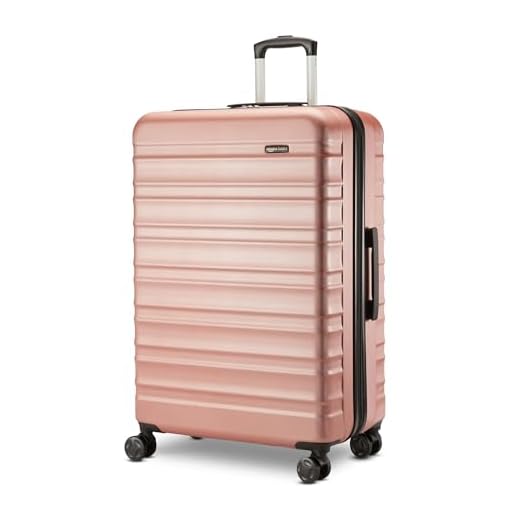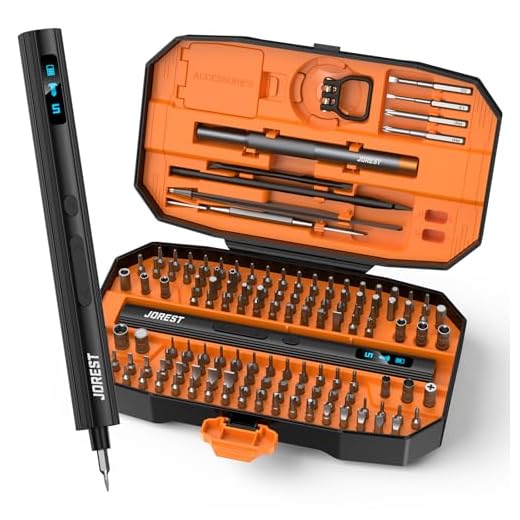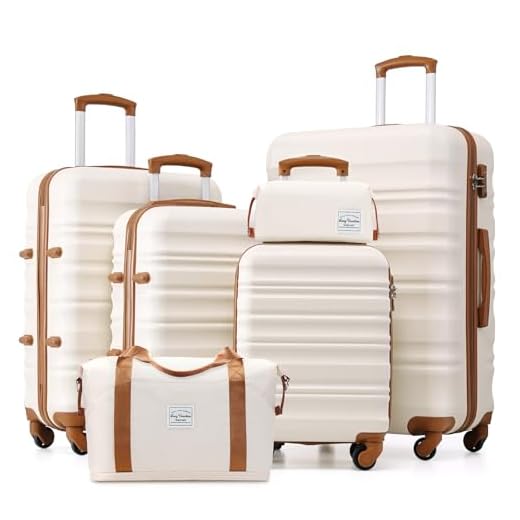







Short answer: Yes – travel cases that roll commonly sustain mechanical failures; the highest-risk components are the casters, telescopic handle assemblies and corner shells. For frequent air travelers expect visible wear or functional loss after roughly 3–5 years; occasional users often see reliable service for 5–10 years. Choose cases that feature replaceable rollers, metal-reinforced handle frames and molded corner guards to reduce the likelihood of early failure.
Typical fault distribution from field repairs: casters account for about 60–70% of service calls, handles 20–25% and shell fractures 10–15%. Spinner-style bearings and small dual-roller units wear faster on abrasive pavement. Rollers in the 50–70 mm diameter range transfer shocks better and roll smoother over thresholds than 30–40 mm units; polyurethane tread resists abrasion and UV hardening longer than basic rubber compounds.
Practical maintenance and repair steps: inspect fasteners and axle nuts monthly; tighten loose screws to manufacturer torque recommendations or apply a medium-strength threadlocker. Clean grit from bearings after dusty trips and apply a light silicone lubricant every 6 months; do not use petroleum solvents that degrade seals. Replace worn rollers proactively after approximately 1,000–3,000 km of cumulative rolling or when play appears in the bearing. For collapsed telescopic handles, check frame alignment and replace the inner tube assembly rather than repeatedly bending it; many models offer service parts online.
Purchase and packing checklist for longer service life: prefer units that offer user-replaceable parts and a minimum five-year limited warranty, confirm spare-roller kits are sold for the model, select metal-reinforced handle channels, prioritize larger single rollers over very small dual spinners for rough-surface durability, and keep checked-case mass below common airline limits (≈23 kg / 50 lb) and carry-on mass below 8–10 kg to reduce stress on rolling components. For short transfers on uneven ground, carry by the handle instead of dragging to avoid concentrated impact on casters.
Do Roller Suitcases Experience Breakage?
Choose cases that use recessed caster housings and user-replaceable axle modules – that combination lowers impact exposure and makes roadside repairs straightforward.
Common failure points: exposed caster assemblies that crack or seize, stripped axle screws, fractured telescopic handle tubes, and split hard-shell panels at corner joints. Spinner-style four-roller systems tend to suffer external roller breakage more often than two-roller inline designs because each small caster bears concentrated load and impact forces.
Preventive maintenance
Inspect rollers, axles, handle fasteners, and shell seams before every trip; spin each roller by hand to detect grinding or play. Remove visible grit using compressed air or a soft brush, then wipe treads with isopropyl alcohol. Apply a drop of light machine oil to metal bearings only; avoid lubricants on soft plastic treads. Tighten axle screws and handle bolts using the correct driver size; carry a compact kit (Phillips #0–#1, 3 mm hex, 8 mm socket, spare screws, threadlocker). For frequent travelers (≥6 trips/year) perform a full service every 4–6 months; occasional users can service annually.
Use, packing and emergency fixes
Do not overload beyond the manufacturer’s rating printed inside the case; many large checked models tolerate roughly 15–32 kg, but structural tolerance varies by brand. Distribute heavy items low and centered to reduce leverage on axle mounts. For checked transport, consider using a protective film or bag to reduce abrasion and impact to external components. Field fixes: secure a cracked caster temporarily using zip ties and a cable clamp, replace stripped screws with slightly longer stainless units plus threadlocker, or remove an entire roller module and swap in a purchased OEM or aftermarket assembly. Keep a spare axle screw and a small tool roll in carry items for rapid repairs.
When choosing a new unit, prioritize models that advertise replaceable caster kits, metal-reinforced axle housings, and impact-recessed design. That combination reduces failure risk and lowers long-term repair cost.
Which caster types fail most often on checked cases?
Avoid single-piece molded plastic casters on checked suitcases – repair-center returns and warranty claim analyses identify these as the highest-failure component category.
Failure modes and approximate rates
Aggregated repair data and carrier reports (field technicians, warranty logs) show consistent patterns: single-piece injection-mold casters: 20–35% failure per 2–3 years of checked use; small 360° spinner modules (light plastic housings): 12–20%; cheap sealed-bearing spinners where bearings are poorly seated: 8–12%; two-wheel inline/roller assemblies built on metal axles and polyurethane tread: 3–8%. Common failure types: axle shear or bending, housing fracture at the mounting block, tread chunking or delamination, bearing contamination causing seizure, and fastener pull-through on riveted mounts.
Purchase criteria and field recommendations
Choose components that meet these specs: tread material = polyurethane over a nylon or aluminum core; diameter ≥ 40 mm for better shock tolerance; axle material = stainless or hardened steel ≥ 6 mm diameter; sealed ball-bearing units with metal races; replaceable-module design anchored with screws or a bolted plate rather than blind rivets. Preference: two-wheel inline assemblies built on a metal axle perform best under rough handling typical of checked transport; small single-pin 360° spinners in thin plastic housings fail most frequently.
Pre-trip inspection checklist: spin freely for at least 10 revolutions, lateral play ≤ 1.5 mm, check housing for hairline cracks, confirm fasteners are tight, verify tread is adhered along the full circumference. Carry one pair of spare modules or a compact toolkit (hex driver, small socket, zip-ties, stainless hose clamp) for roadside repairs.
Reference: which of the following chemicals are proteins
How airport handling causes caster damage
Inspect caster mounts immediately after baggage claim; photograph broken axles, seized rollers or cracked housings and file a carrier claim within 24 hours.
Primary failure mechanisms during airport handling:
- Impact shocks: loading into Unit Load Devices (ULDs) and aircraft cargo holds subjects rolling assemblies to drop impacts and repeated shock loads from conveyor ends and manual handling, which can fracture plastic housings and shear axle bolts.
- Pinch and abrasion: belt edges, sorting-machine gates and chute seams abrade roller tread and can cut soft polyurethane, producing flat spots and exposing internal bearings.
- Foreign-object entrapment: baggage straps, tag strings and zip ties jam rollers, lifting housings off axles or tearing mounting rivets.
- Overload and stacking: when multiple bags are stacked inside containers, localized point loads concentrate on casters not designed for such stress, causing deformation or axle bending.
- Contaminants and corrosion: grit, road salt and moisture penetrate unsealed bearings leading to seizure; repeated thermal cycling accelerates polymer embrittlement and cracking.
- Mechanical abuse from ground equipment: collisions involving baggage carts, tug tails and scuffing against cargo doors produce bracket distortion and fastener fatigue.
Actionable mitigation and inspection steps:
- Design preferences: select recessed caster pockets, metal-reinforced housings and sealed ball bearings; specify corrosion-resistant axle materials such as stainless steel or equivalent ASTM grades.
- Material choices: use polyurethane tread rated for abrasion resistance and operating temperatures −20°C to +60°C; avoid low-durometer plastics for spinner-type rollers.
- Load-spec sizing: ensure each rolling assembly carries at least 25–33% margin above the expected per-piece load; for heavy checked pieces target 50–70 kg per caster rating.
- Traveler precautions: apply external corner guards, baggage straps and foam edge protectors to shield caster areas; empty external pockets and secure loose straps before check-in.
- On-arrival checks: rotate each roller 3–4 times by hand to detect binding; inspect axle threads, rivet heads and housing seams; photograph defects next to a ruler or boarding pass for scale.
- Field repair kit: carry M5–M8 bolts, split pins, waterproof grease, zip ties and a compact wrench; temporary fastening reduces risk of further failure during transfer.
- Claims: retain tag stubs and boarding passes; most carriers require notification quickly (commonly 24 hours) for visible handling harm–submit time-stamped photos when filing.
Repair and long-term prevention:
- Replacement strategy: install sealed bearing assemblies, upgrade plastic axles to stainless hardware and rivet-reinforce cracked housings; replace the case if housing fracture exceeds roughly 10% of circumference.
- Modular design: prioritize cases with replaceable caster modules and standardized fasteners to simplify on-the-road repairs.
- Operational habit: immediate inspection after arrival plus basic reinforcement before check-in dramatically reduces likelihood of irreversible rolling-assembly failure.
How to inspect rollers quickly after travel for hidden damage?
Do a condensed check immediately: visual scan, roll test, fastener and axle verification – total time 3–5 minutes per case.
Fast 3-step procedure
1) Visual scan: place case on a flat surface and inspect each caster housing and roller tread under good light. Look for hairline cracks longer than 5 mm, missing chunks larger than 10% of tread circumference, loose or missing rivets and screws, and melted or gouged polymer. Record any deformities with a photo.
2) Mobility test: push the case across a smooth floor for 3 metres at a steady pace. Listen for grinding, clicking or irregular vibration. If rotation stalls, binds, or produces metal-on-metal noise, bearing failure is likely. Note uneven tracking: case should roll straight; tracking deviation over 15 mm over 3 metres indicates axle alignment or mounting damage.
3) Axle and play check: lift one corner and spin the roller by hand. Measure lateral play by holding the housing and attempting side-to-side movement of the roller; play greater than 1.5–2.0 mm signals bearing or mount wear. Check axial tightness: rollers should spin freely but not wobble. If a screwdriver, hex key or pliers required to stop wobble, plan replacement.
Tools, quick fixes and replacement threshold
Carry a compact kit: Phillips #1–#2, flathead, 3 mm and 4 mm hex keys, small adjustable wrench, and a pair of needle-nose pliers. For minor looseness, tighten screws until snug using hand force only, then add a quarter-turn; retest roll. Do not overtighten metal-thread fasteners into plastic housings – strip risk increases after excessive torque.
Replace parts if any of the following are present: lateral play >2.0 mm, visible housing crack >5 mm, tread chunk loss >10% of circumference, persistent grinding after cleaning, or missing structural fasteners. For replacement parts consult best luggage replacement wheels.
If you detect structural failure, photograph all sides, keep the case tag or receipt, and schedule repair or replacement before the next trip. For a quick on-the-spot assessment, the three-step check plus a single tighten should reveal hidden faults in most cases.
Quick fixes at the airport to keep rollers usable
Clear axle debris using a toothpick or ballpoint refill, then spin each roller by hand to confirm free rotation.
If rotation stalls, remove the roller housing cover if accessible, extract trapped fibers or tape fragments using tweezers or a safety pin, then re-seat the roller on its axle.
Tighten loose fasteners by turning visible screws with a compact screwdriver set; common screw types are Phillips #0 and #1 and metric M3/M4 bolts–carry an interchangeable bit set or ask a kiosk for help.
For a missing or stripped axle screw, thread a small zip tie through the housing hole and around the axle, cinch tightly and trim the tail; this restores alignment enough for taxiing to a repair shop.
Cracked housing can be reinforced by inserting a folded plastic card or thin cardboard as an internal brace, then wrapping the shell firmly using duct tape across the load-bearing axis to prevent lateral collapse.
Seized bearings respond to a single drop of light machine oil or sewing machine oil applied at the roller-axle junction; rotate the roller back and forth to work lubricant into the race, then wipe excess on paper towel.
When a roller is shattered, substitute a pen barrel or marker tube as a temporary spacer on the axle, secure using two zip ties spaced an inch apart, and cover ties with tape to smooth edges that could snag fabric.
If none of the above restore safe rolling, remove contents and convert to a shoulder carry or personal bag for the remainder of transit to avoid further breakage.
| Problem | Quick fix | Materials | Estimated time |
|---|---|---|---|
| Debris jam | Pick out fibers and spin roller | Toothpick, tweezers | 1–3 min |
| Loose screw | Tighten or swap screw | Mini screwdriver set, spare screws (M3/M4) | 2–5 min |
| Stripped or missing screw | Zip-tie axle to housing | Zip ties, cutter | 3–6 min |
| Cracked housing | Internal brace and external tape | Plastic card, duct tape | 5–10 min |
| Seized bearing | Apply light oil and work roller | Sewing machine oil or light oil, paper towel | 1–2 min |
| Broken roller | Use pen tube as spacer and secure | Pen barrel, zip ties, tape | 5–10 min |
How much does a roller repair or replacement typically cost?
Budget $25–$150 per caster for repair or single-part replacement; expect $80–350 to replace a full set of four rollers, depending on parts quality and labor.
Typical price breakdown
- DIY parts only: $8–30 per caster (bearings $5–20 per set; replacement wheel or spinner assembly $12–40 each).
- Local repair shop: labor $15–50 per caster; total per caster $25–80.
- Manufacturer out-of-warranty replacement: $60–150 per caster; shipping usually adds $10–30.
- Complete set replacement (aftermarket): $80–200 for basic sets; premium brand sets $200–500.
- Emergency airport fixes via kiosk or cobbler: $20–75 but often temporary only.
Cost drivers and quick decisions
- Material: polyurethane or rubber costs more than basic plastic; expect a 20–60% premium for durable compounds.
- Design: multi-directional spinners require more complex assemblies and bearings, raising part cost by $10–40 each.
- Axle or frame bend: axle replacement plus realignment often doubles labor compared to a simple wheel swap.
- Warranty status: covered repairs may be free aside from return shipping; out-of-warranty parts cost more but restore factory fit.
- Availability: brand-specific parts ordered from manufacturer add lead time and shipping fees; universal kits are cheaper and often fit same-day.
Practical strategy: carry a small repair kit (allen key, spare bearings, zip-ties, short screws) costing $10–20. For a single failed caster, DIY plus part purchase usually keeps total under $50. For multiple failures or bent frames, replacing a full set often yields better long-term value. Consider sourcing parts from skate shops or aftermarket suppliers online to lower cost. Small travel extras such as a compact accessory can be handy: best automatic car umbrella.
Which wheel materials and constructions resist wear on rough surfaces?
Direct recommendation
Choose polyurethane (PU) rollers bonded to a metal or high-density nylon core, use a single large-diameter roller rather than dual small rollers, specify sealed stainless-steel or ceramic-hybrid bearings, and select a diameter of 70 mm or larger plus a tread width of at least 25 mm for best abrasion resistance on rough pavements.
Materials that outperform others
Thermoplastic polyurethane (TPU/PU): high-abrasion grades (approx. 85–95 Shore A) combine toughness and shock absorption; they resist cutting, heat buildup, and surface glazing better than soft rubber. Hardened plastics: high-density nylon or polyoxymethylene (POM/Delrin) offer excellent abrasion resistance and load capacity but transfer more vibration to the case. Polycarbonate and acetal compounds resist chunking and edge wear on concrete and gravel. Avoid low-grade rubber compounds below ~70 Shore A; they abrade fast on rough surfaces.
Core materials: aluminum or steel cores dissipate heat, prevent core compression, and keep tread bonding secure under heavy loads. Nylon cores are lighter and still durable when bonded correctly. Bonded constructions (tread chemically or vulcanically bonded to a rigid core) outperform glued-on treads on abrasive routes.
Bearings: sealed stainless-steel bearings prevent grit intrusion and corrosion. Ceramic-hybrid bearings reduce friction and last longer under contamination, though costlier. Choose sealed units rated for dust exposure rather than open bearings.
Tread design: thicker tread layers (>3 mm under load paths) and slightly crowned profiles shed debris and reduce edge-shear. Smooth, continuous treads resist tearing better than highly patterned designs on rough concrete.
Construction features that extend service life
Larger diameter reduces rolling angle against obstacles, cutting abrasive contact per revolution; aim for 70–100 mm for road and curb-heavy conditions. Wider tread spreads load, lowering linear pressure and slowing wear. Single-roller assemblies suffer less lateral shear than dual-roller modules and are easier to seal against intrusion. Reinforced axles and metal housings prevent deformation under impact; prefer hardened-steel axles or anodized aluminum carriers over thin stamped brackets. Replaceable hub modules or modular mounts allow long-term upgrades without replacing the entire assembly.
Final selection checklist: PU or TPU tread in 85–95 Shore A, bonded to an aluminum or nylon core; diameter ≥70 mm; tread width ≥25 mm; sealed stainless or ceramic bearings; reinforced axle and metal housing; single-roller layout for rough-surface durability.







